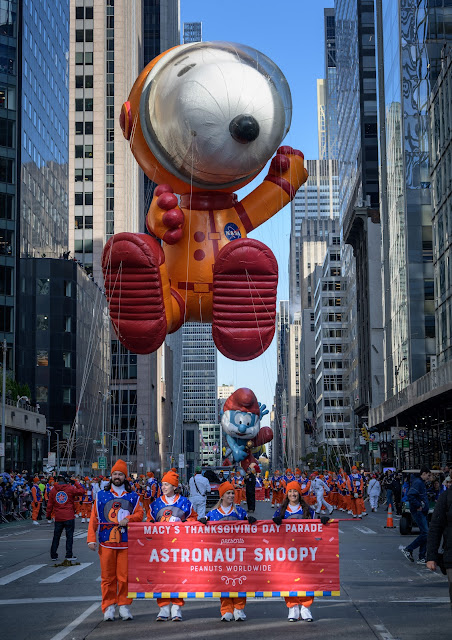NASA's Astronaut Snoopy at Macy's Thanksgiving Day Parade in New York City
NASA employees, Brandon Hancock, left, Whitney Sheppard, Corinne Edmiston, and Ashley Nelson, right, lead Astronaut Snoopy balloon as it floats along in the Macy's Thanksgiving Day Parade
The Astronaut Snoopy balloon as it floats along in the Macy's Thanksgiving Day Parade on, Thursday, Nov. 24, 2022, in New York City. The Astronaut Snoopy balloon is flying in New York City at the same time that Snoopy also flies around the Moon in the Orion spacecraft as a zero gravity indicator for the Artemis I mission.
Thanksgiving is a federal holiday in the United States, celebrated on the fourth Thursday of November. It is sometimes called American Thanksgiving (outside the United States) to distinguish it from the Canadian holiday of the same name and related celebrations in other regions.
NASA has shared an association with Charles M. Schulz and Snoopy since the Apollo missions and the relationship continues under Artemis. Snoopy was selected as the zero-gravity indicator for the flight because of the inspiration and excitement the character has provided for human spaceflight for more than 50 years.
Credit: NASA/Bill Ingalls
Release Date: November 24, 2022
#NASA #Space #Earth #Thanksgiving #Holiday #MacysThanksgivingDayParade #Thanksgiving2022 #NewYorkCity #NewYork #America #Snoopy #Moon #Artemis #ArtemisI #Orion #Spacecraft #DeepSpace #MoonToMars #Science #Engineering #Technology #Exploration #HumanSpaceflight #SolarSystem #UnitedStates #Apollo #History #STEM #Education






.jpg)








.jpg)